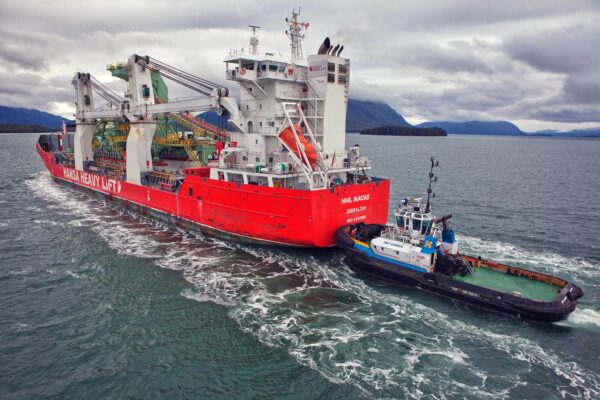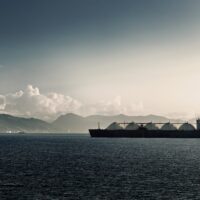Although crude oil spills are infrequent in Canada their consequences to the environment and impacted local economies, as well as on human health, can be profound.
Executive Summary
Clear Seas is an independent, not-for-profit research centre that provides impartial information on marine shipping in Canada to policy makers and the public.
We are providing this digest of the Royal Society of Canada Expert Panel’s report entitled The Behaviour and Environmental Impacts of Crude Oil Released into Aqueous Environments.
This short digest is not meant to be inclusive of all the report’s commentary and/or recommendations, nor are the items mentioned necessarily in the same order as the original report.
Message from the Executive Director
Over the past few decades much has been learned about the causes and impacts of ship-source accidents and oil spills. This learning curve has resulted in: (1) better preventative and spill response legislation being implemented by governments; (2) improvement in construction and safety awareness on the part of ship owners and mariners; and (3) greater public awareness and scrutiny regarding the transportation of oil and oil products.
Current decisions regarding modes of oil transportation in Canada have increased public concern regarding the consequences of accidental spills of crude oil into aquatic environments, in particular. In an effort to address issues of concern, in 2015, the Royal Society of Canada Expert Panel produced a report entitled: The Behaviour and Environmental Impacts of Crude Oil Released into Aqueous Environments. Its findings are based on a review of current science along with consultations with key stakeholders to better understand what is behind the risks of crude oil spills in aquatic environments. Included in the report are descriptions of the chemical compositions, properties and behaviours of spilled oils, the effect of the environment on the behaviour of oil, and spill modelling practices. Among the Panel’s many conclusions is a significant list of research needs, including seven key areas that should become top research priorities in the years ahead.
Clears Seas is in full support of the suggested initiatives.
INTRODUCTION
A Royal Society of Canada (RSC) Expert Panel was established in response to a request from the Canadian Energy Pipeline Association (CEPA) and the Canadian Association of Petroleum Producers (CAPP). The request was the result of widespread recognition within industry, governments, and elsewhere that Canadians should know what to expect in the event of an accidental spill of oil in the marine environment. Further, those who move oil and respond to spills should have the information they need to protect our environment, economy and communities across the country.
The Panel, composed of international experts on oil chemistry, behaviour and toxicity, reviewed the current science relevant to crude oils which could potentially be spilled into Canadian waters. In addition to relying on scientific literature, key reports, and selected oil spill case studies, this work also involved extensive consultations with key industry, government and environmental stakeholders.
The review examined spill impacts and oil spill responses for the full spectrum of oil types. Many of the largest knowledge gaps were found to be associated with the chemical composition and environmental behaviour of emerging petroleum types.
CHEMICAL COMPOSITION, PROPERTIES, AND BEHAVIOUR OF SPILLED OILS
Each of the oil types transported in Canada – from ultra-light oil condensates[1] and light oils[2] to heavy crude oils and thick bitumen[3] – has a unique ‘chemical’ fingerprint. This chemical fingerprint is a key predictor of not only the physical properties of the oil (e.g., how heavy or thick it is), but also its behaviour in the environment (e.g., how it spreads, sinks or disperses in water), its toxic effects on aquatic organisms and humans, and its susceptibility to degradation by ‘weathering’ (i.e., changes to the oil caused by exposure to sunlight, waves, weather conditions and microorganisms in the environment). Knowing how the fingerprint of each spilled oil type changes in the marine environment improves spill responders’ ability to monitor cleanup efforts and set cleanup goals.
- Condensates are conventional naturally occurring ultra-light crude oils, often co-produced with natural gas (methane).
- Light crudes are conventional oils found throughout the world. Alberta Sweet Mixed blend for example, is a major crude shipped from Alberta. It has been used as a reference oil by Environment Canada for chemical composition, biodegradability and emulsification studies.
- Heavy oils and bitumen are at the end of a continuum of increasingly heavy viscous oils. Bitumen would not flow through a pipeline efficiently, so it is mixed with diluents to be readied for pipeline transportation as diluted bitumen, or ‘dilbit.’
More research is needed to better understand the chemistry, properties and spill behaviour of newer, less-familiar oils, such as bitumen, diluted bitumen blends and other unconventional oils.
Overall the Panel identified seven high priority research needs under the following five categories of concern: (1) effect of the environment on the fate and behaviour of oil; (2) oil toxicity and ecological effects, modelling oil spills in water; (3) a review of spill response options; (4) prevention and response decision making; and (5) risks from oil spills. Their recommendations attached time frames (ranging from 5 to 10+ years) associated with the research.
EFFECT OF ENVIRONMENT ON THE FATE AND BEHAVIOUR OF OIL
The unique features of the environment where an oil spill takes place are at least as important as the type of oil in determining effects on aquatic ecosystems.
Although the impact of spilled oil on the characteristics and conditions of a spill site has been carefully studied in some environments, knowledge gaps remain. In particular, research is needed to better understand what happens to oil spilled into the cold, icy, yet ecologically sensitive waters of the Arctic, where interest in oil exploration, production and shipping is on the rise. Similarly, little is known about the fate of oil and its impact in permafrost areas or in marine environments covered in ice. Microorganisms that break down oil are considered less active when temperatures are near freezing, but this relationship may not be as clear as previously thought. Further study is needed.
RESEARCH NEED #1: Research is needed to better understand the environmental impact of spilled crude oil in high-risk and poorly understood areas, such as Arctic waters, the deep ocean and shores, or inland rivers and wetlands.
OIL TOXICITY AND ECOLOGICAL EFFECTS
Oil spills can have significant consequences for aquatic ecosystems that can be both short- lived and long lasting. In the days following a spill, floating oil can smother mollusks, plants and other species at the shoreline. Oil on birds and mammals compromises their thermal insulation and buoyancy. Some chemical components of spilled oil dissolve in water and kill fish and other aquatic creatures (before they typically break down quickly and disappear). Other chemicals, such as polycyclic aromatic hydrocarbons (PAHs)[4], can persist in the water and cause chronic health effects for aquatic species that may only appear months or years later.
Light oils contain more compounds that are acutely toxic to aquatic organisms than medium or heavy oils. On the other hand, heavy oils contain more of the chronically toxic alkyl PAHs. Diluted bitumens may be a greater risk to bottom- and sediment-dwelling organisms due to the tendency for diluted bitumens to sink in fresh water under certain conditions.
The term polycyclic aromatic hydrocarbons (PAHs) refers to a group of several hundred chemically related, environmentally persistent organic compounds of various structures and varied toxicity.
It is not only the spills themselves that threaten ecosystems, as oil spill cleanup can be damaging as well. More research is needed on spill cleanup methods that limit habitat damage and threats to wildlife.
Additionally, oil spill impacts on aquatic ecosystems are difficult to measure. In many cases, information about the ecology of a site before a spill occurs (i.e., baseline data) is scarce or missing altogether.
RESEARCH NEED #2: Research is needed to increase the understanding of effects of oil spills on aquatic organisms, populations, communities and ecosystems.
MODELLING OIL SPILLS IN WATER
The complex chemistry of each oil type makes it difficult to predict how oil will act and change when it meets the equally complex chemistry of water, ecology and conditions at the particular site where a spill takes place. For this predictive work, scientific models[5] are invaluable tools.
More research is needed to improve models – particularly of oil-in-ice effects, oil dispersion by waves, oil droplet formation from blowouts, the formation of oil particle aggregates and the biodegradation of oil droplets under various environmental conditions (such as temperature, salinity, nutrient availability, light and chemical dispersants).
RESEARCH NEED #3: A national, priority-directed program of baseline research and monitoring is needed to develop an understanding of the ecological characteristics of areas that may be affected by oil spills in the future. The research should encompass not just information from high-risk, poorly understood areas – such as the Arctic – but also the current status of sensitive and highly valued species and vulnerable habitats, ecosystem sensitivity maps, the natural variability of population and community metrics, and the identification of other anthropogenic stressors that could influence the effects of oil spills.
A REVIEW OF SPILL RESPONSE OPTIONS
Just as types of crude oil are far from uniform and the environments and conditions where spills occur are many, effectively responding to oil spills is complicated. Decisions about what response approach is best and the likelihood of success depend on the oil type, environment and weather conditions, technical and logistical factors such as the responders’ knowledge and skills, the availability of personnel and equipment, time constraints, regulatory approvals, health and safety criteria, etc., financial concerns including the cost and economic impacts of the spill, and the level of community engagement present.
Scientific modelling creates conceptual or mathematical representations of complex real-world phenomena that can’t be readily observed. Scientific models of oil spills use what we know from experiments, previous spills and other information to approximate what happens when oil of a particular type spills in particular circumstances.
There are three main categories of oil spill responses: (1) Relying on natural processes to disperse and degrade spilled oil; (2) Physically containing and removing spilled oil, often using booms and skimmers on the water or washing and scraping at shore; (3) The use of biological and chemical methods (for example, slicks of oil can be burned or dispersed using chemicals at a spill site).
Choosing the best response or combination of responses depends on the unique circumstances of each spill. What is known about oil spill response technologies has been developed through laboratory work and case studies. A better understanding of appropriate spill responses in the Arctic and in snow and ice conditions is vital.
Research is also needed to better understand less familiar response methods, such as anaerobic biodegradation in sediments, and emerging technologies for aiding in the cleanup of anaerobic or anoxic sea floor and lake bottom environments contaminated by sunken oil. What happens to chemically dispersed oil on both the surface and seafloor of the ocean needs to be studied using controlled empirical experiments.
RESEARCH NEED #4: A program of controlled field research is needed to better understand spill behaviour and effects across a spectrum of crude oil types in different ecosystems and conditions.
RESEARCH NEED #5: Research is also needed to investigate the efficacy of spill responses and to take full advantage of “spills of opportunity” – that is, the effect of real-world oil spills as they occur in the short, medium and long-term.
PREVENTION AND RESPONSE DECISION MAKING
The best way to protect aquatic environments from the potentially devastating impacts of spilled oil is to prevent spills from happening in the first place. Effective prevention combines an understanding of the science and technologies associated with oil operations and potential oil spills with a clear understanding of the environment and conditions in which these activities are taking place. For example, properly designed pipelines or tankers can be built to withstand anticipated conditions (waves, wind, ice, etc.) that could increase spill risk. Similarly, established procedures, proper inspection and maintenance of equipment and training for extreme and adverse circumstances help reduce the chances of a spill.
RESEARCH NEED #6: Research is needed to improve spill prevention and develop/apply response decision support systems to ensure sound response decisions and effectiveness.
In addition, prevention policies and measures are often best informed by the timely monitoring and analysis of the causes and outcomes of spills when they do occur. Developing baseline data in areas where oil is transported should be an important priority for research.
Despite the best prevention efforts, spills happen, and making sound and timely decisions about how to respond is a critical second line of defense. Management strategies should be in place to identify the lead decision-making agencies in the case of a spill – and to present clearly the steps to contain potential damage to human health, businesses and environmentally and culturally sensitive areas.
There are limited research efforts being made in simulating, predicting and optimizing cleanup processes (e.g., in situ burning, skimming and dispersion) individually and collectively and evaluating their effects on response decisions. Inadequate decision support is one of the major challenges that limit the efficiency of current response practices. Due to limited attention and investment, existing decision support systems are rare and lack dynamic and interactive support from other modelling tools and field validation.
Uncertainty is a major hindrance to improving efficiency and confidence of decision-making. This is especially true for Arctic waters where the window of opportunity for the application of some response measures is significantly shortened.
RESEARCH NEED #7: Research and work are needed to update, refine and focus risk assessments of oil spills in Canada.
RISKS FROM OIL SPILLS
Learning from history is important to understanding what is known about the risks posed by potential oil spills in Canada and, most significantly, what needs further study. Chief among the Panel’s conclusions is that each case studied was unique in the combination of different physical, chemical and biological factors at the spill location, as well as in the cleanup and recovery measures used in the wake of each accident. These varied combinations of factors were critical for either increasing or decreasing the overall impact for each spill.
Delays in responding to the spilled oil affected the outcome of all case studies examined and human error (individuals and organizations) played a dominant role in affecting the impact of the spills across all case studies.
In most cases, the lack of pre-spill baseline data (i.e., information about the natural environment and ecology of each area) hampered efforts to predict or monitor the long-term effects of the oil spills on populations and communities of aquatic life. Similarly, monitoring following spills was not conducted according to any standard or consistent national protocols.
The lack of readily accessible data for use in the assessments and the need for increased sophistication of both exposure and effects analyses remain a challenge. The Panel found that in many cases, even if data were accessible, they were extremely limited, particularly for the Arctic and large portions of inland rivers, lakes and wetlands. Furthermore, the assumptions used in the risk assessments were sometimes overly optimistic given the experience gained from oil spill case studies.
SUMMARY AND CONCLUDING COMMENT
Although crude oil spills are infrequent in Canada their consequences to the environment and impacted local economies, as well as on human health, can be profound. Meanwhile, Canada’s offshore oil and gas industry is expected to grow.
While scientific advances have significantly reduced the threat of oil spills in Canadian waters over the past few decades, much about the fate and effects of oil spills remains poorly understood.
Despite the importance of the type of oil being transported, the Panel concluded that the overall impact of an oil spill, including the effectiveness of an oil spill response, depends mainly on the environment and conditions (weather, waves, etc.) where the spill takes place and the time lost before remedial operations begin.
In the context of the seven high-priority research needs discussed in this digest, the Panel noted the need to identify where most oil spills occur and why – and to examine past spill response records, as well as current risk management processes and regulations to identify their weaknesses. Other critical knowledge gaps include developing a better understanding of environmental sensitivities that affect the impact of spilled oil. More research is also needed to understand how the type of oil, its source, the environment and the level of preparedness of spill responders combines to influence spilled oil’s fate and effects.
Further, to meet the research and oil spill response needs identified in its report, the Panel recommended the conduct of coordinated multi-disciplinary research programs between industry, government and academia to further study the effects of oil spills on various marine and freshwater ecosystems, including wetlands. The program should also include Indigenous people for the provision of traditional knowledge and expertise. The science from these studies will provide a much-needed database on the interaction and effects of spilled oil with its surrounding environment that will support science-based decision-making following future spill incidents.
[1] Condensates are conventional naturally occurring ultra-light crude oils, often co-produced with natural gas (methane).
[2] Light crudes are conventional oils found throughout the world. Alberta Sweet Mixed blend for example, is a major crude shipped
from Alberta. It has been used as a reference oil by Environment Canada for chemical composition, biodegradability and emulsi cation studies.
[3] Heavy oils and bitumen are at the end of a continuum of increasingly heavy viscous oils. Bitumen would not flow through a pipeline efficiently, so it is mixed with diluents to be readied for pipeline transportation as diluted bitumen, or ‘dilbit.’
[4] The term polycyclic aromatic hydrocarbons (PAHs) refers to a group of several hundred chemically related, environmentally persistent organic compounds of various structures and varied toxicity.
[5] Scientific modelling creates conceptual or mathematical representations of complex real-world phenomena that can’t be readily observed. Scientific models of oil spills use what we know from experiments, previous spills and other information to approximate what happens when oil of a particular type spills in particular circumstances.



